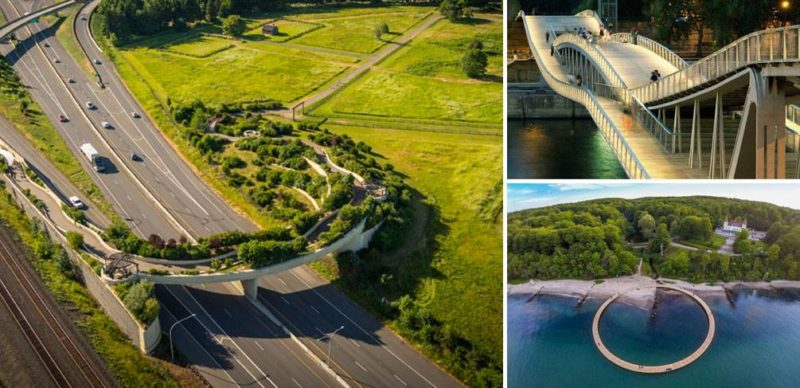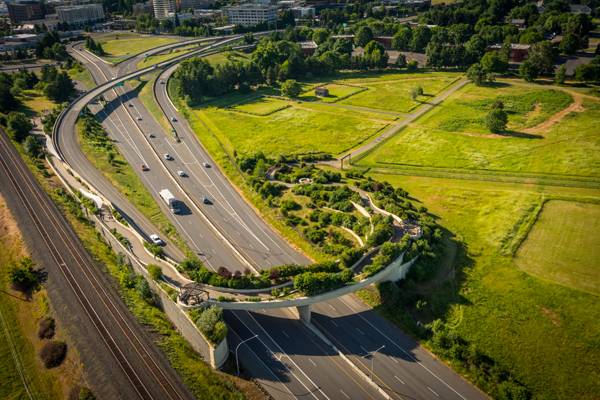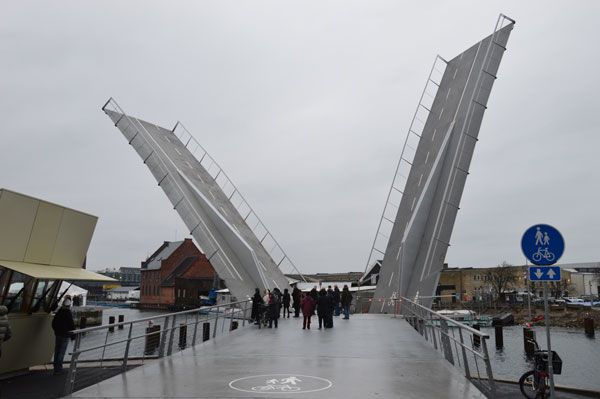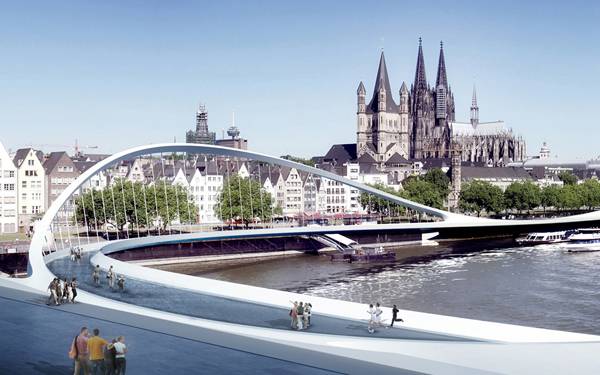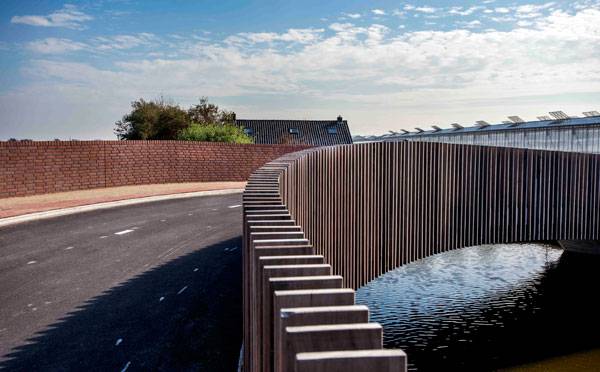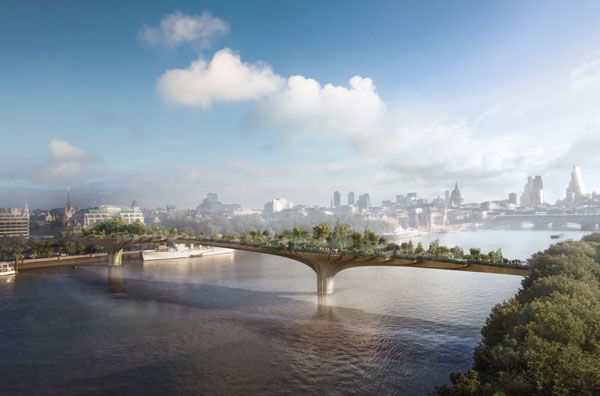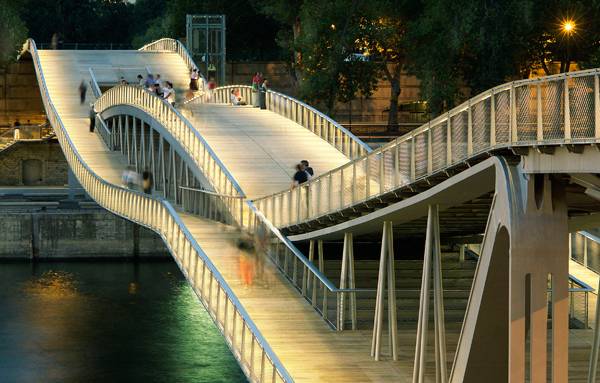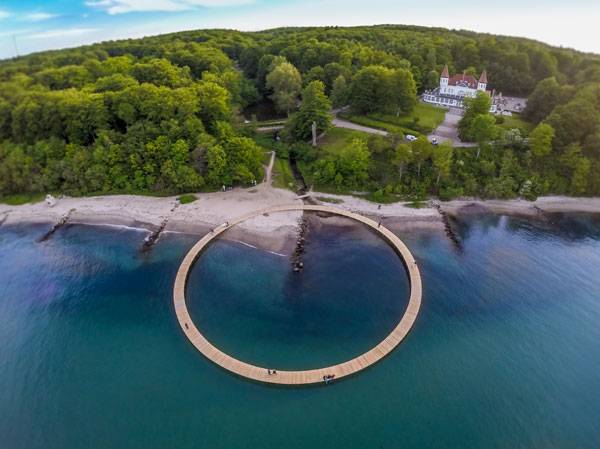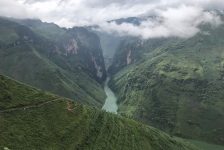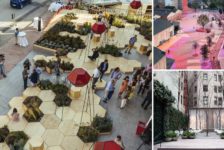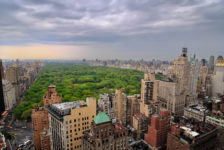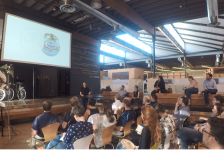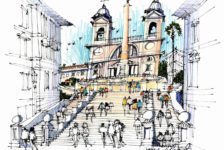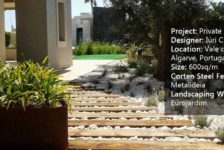Article by Samia Rahman Bridges are often seen as great functional feats of engineering. We take a look at the bridges that change this perception and show us that they can be so much more. “Bridges are among the most ancient and honorable members of society, with a background rich in tradition and culture. For countless generations, they have borne the burdens of the world and many of them have been great works of art.” — Charles S. Whitney, Bridges: A Study in Their Art, Science and Evolution, 1929 In this era of modern technology, we are amazed every day by new innovations. As an integrated part of the natural landscape, bridges are among those innovations. Environmental issues and technological structure are integrated into the proliferation of design concepts. Here, we have put together a list of 10 incredible bridges that change the interpretation of modern bridges.
Bridges
(Click on any of the headlines to find more information about that project) 10. Vancouver Land Bridge, Vancouver, WA The Vancouver Land Bridge is located over a six-lane highway in Vancouver, WA. Its most elegant features are its serpentine form and its ecological contribution of integrating native plants, as Eduardo Reguer discusses in the article “Land Bridge is an Ecological Masterpiece”. Each landscape of the bridge is comprised of various species of shrubs, herbs, grasses, and trees. Amalgamating the art with architecture, the infrastructure shows the quality of uniting the memory of cultural history and the environment.
9. Butterfly Bridge, Copenhagen, Denmark To promote cycling in the city of Copenhagen, Dietmar Feichtinger Architects has made a bridge that consists of three individual spans. According to Tahio Avila’s article “The Butterfly Bridge Opens its Massive Wings to the Public”, the bridge is designed with three decks that connect the different banks. Two of the spans can be opened for passing sailboats. When those spans are lifted, they form a spectacular butterfly — that’s why it is named “Butterfly Bridge”. 8. The Zhangjiajie Grand Canyon Glass Bridge, China How would you react if you couldn’t see the bridge you’re walking on under your feet? Many of us think that would be a scary dream, but now it has come to reality. The stunning bridge in Zhangjiajie National Forest Park is a transparent glass-bottom bridge that provides views over the top and sides, as well as through the bottom. The architect accepted the challenge to design it as “invisible as possible — white bridge disappearing into the clouds.” This structure inspires us to express the incredible capabilities of our limits. WATCH >>> The longest and highest Glass Bridge in the world7. The RheinRing Bridge, Germany The RheinRing Bridge promotes a new form of urban space for cultural exploration. As the description is illustrated in “RheinRing Bridge is a Work of Art!” by Sha Sulaiman, the geometry is derived from a mathematical model of a superellipse, flattened shape that blends into the context of nearby forms. The bridge stands without any single piers, so that the river traffic below remains unaffected. The barrier-free cantilever arch invites pedestrians and cyclists.
6. Bridge of Mont-Saint-Michel, France As a part of a UNESCO list of world heritage sites, the Mont Saint Michel Bridge affirms a cultural identity with its mesmerizing landscapes. Tania Ramos’ exceptional article “New Access Promotes the Revival of Mont Saint Michel” reveals the challenging story behind returning the area’s appeal by replacing a massive road with a long jetty without hampering the natural settings. “The structure is minimal in its expression, but ambitious in its design and performance,” says the architect, Dietmar Feichtinger. 5. Vlotwatering Bridge, The Netherlands There is no bridge that directly contributes to the habitats of bats like the Vlotwatering Bridge, also known as the “Bat Bridge”. Check out Eni Ceka’s excellent article “How Can a Bridge Serve as Outstanding Eco-Infrastructure?” in which she technically elaborates on the intention of designing the bridge and how it helps to improve ecology. As a part of the design team, Marcel Schillemans, a bat expert from the Mammal Society, says it is “a textbook example of how a functional object can at the same time serve nature.” 4. 11th Street Garden Bridge, Washington, D.C. The 11th Street Bridge Park is a collaborative effort of the Washington, D.C., city government, the OMA and OLIN, and the Ward 8-based non-profit group “Building Bridges across the River at THEARC.” Erin Tharp’s excellent article “The Street Bridge Park Everyone’s Talking About” reveals the features of the dynamic thoroughfare infrastructure that erects a public space by providing multilayered programs for communities. 3. Double Foot Bridge, Paris, France The Feichtinger’s passerelle is the classic masterpiece of contemporary infrastructure design. In the LAN article “Incredible Double Footbridge in Paris”, Win Phyo discusses the bridge that creates an elegant look in its form. The most striking feature is its unsupported span and total length of 304 meters — which is as equal to the Eiffel Tower. The overlay of two curves creates a lens-shaped space in the middle of the bridge, offering a unique public area suspended over the water. 2. Pedestrian Bridge of Yanweizhou Park, Jinhua, China Located at the center of Jinhua city, Yanweizhou Park has become a hub for cultural activities and biodiversities of green spaces. Once, the park was underutilized and underdeveloped because of its lack of public accessibility. As Erin Tharp states in her well-written article “The Stunning Yanweizhou Park Recaptures Lost Ecology”, the main focus of the park is the poetic pedestrian bridge. The architect intentionally designed the elevated structure to reinforce the vernacular tradition.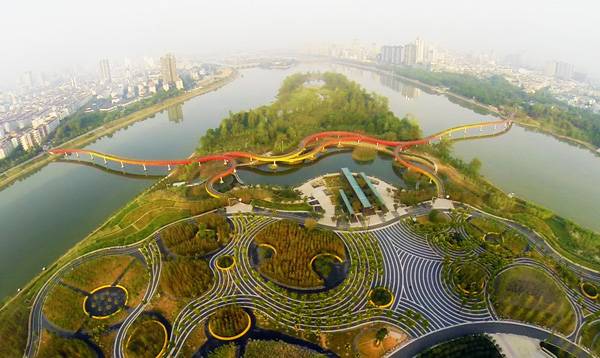
Yanweizhou Park, birdseye view. Credit: Turenscape
Bridges
As we can see from these examples, no bridge design is impossible if the designers take advantage of modern technology. These bridges create connections with people, turn the structures into gathering spaces, and create strong relationships between technology and the social activities of people. What others technologies can be used in modern bridge design? Let us know your thoughts in the comments below.
>>>CLICK TO COMMENT<<<
Recommended Reading:
- Becoming an Urban Planner: A Guide to Careers in Planning and Urban Design by Michael Bayer
- Sustainable Urbanism: Urban Design With Nature by Douglas Farrs
Article by Samia Rahman
Published in Blog

